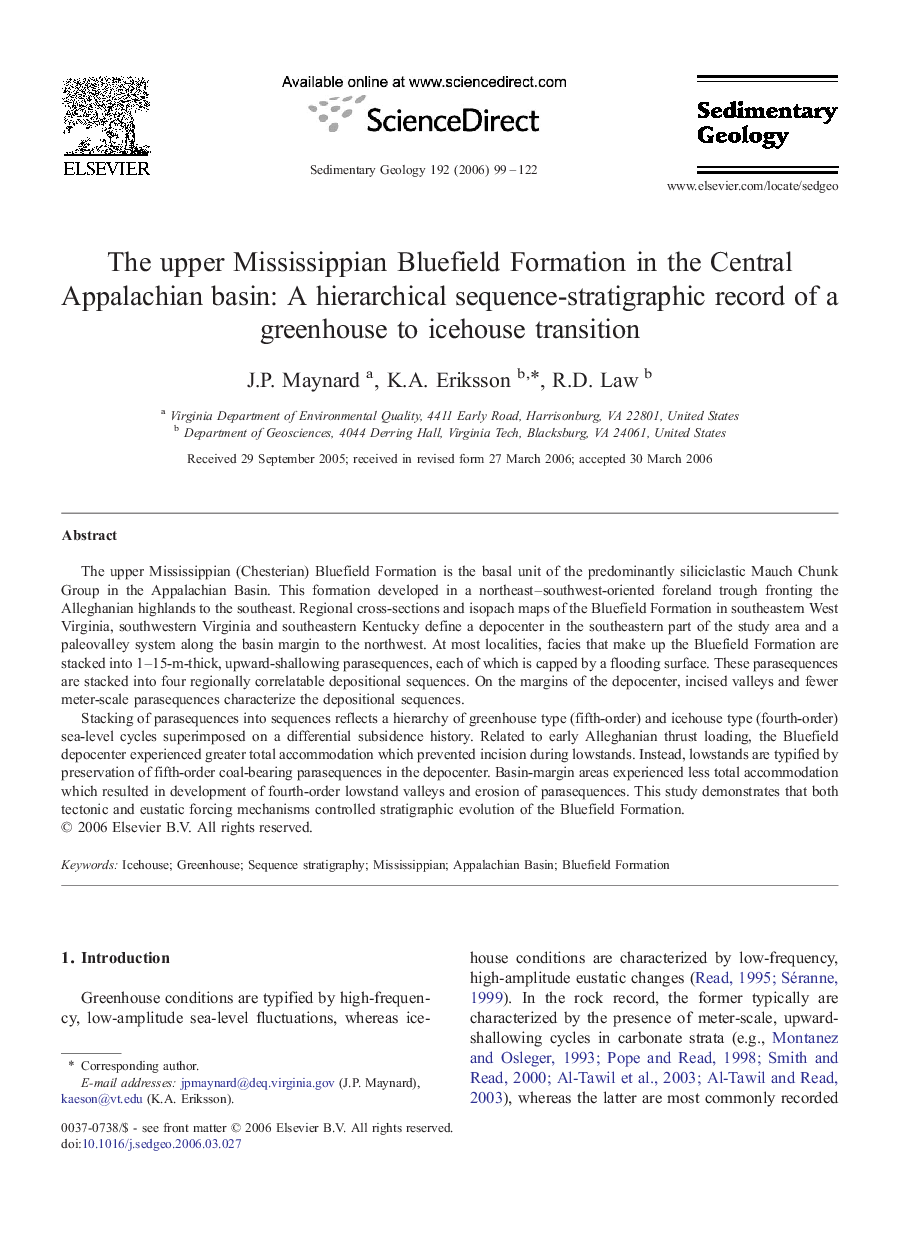| کد مقاله | کد نشریه | سال انتشار | مقاله انگلیسی | نسخه تمام متن |
|---|---|---|---|---|
| 4690911 | 1636180 | 2006 | 24 صفحه PDF | دانلود رایگان |

The upper Mississippian (Chesterian) Bluefield Formation is the basal unit of the predominantly siliciclastic Mauch Chunk Group in the Appalachian Basin. This formation developed in a northeast–southwest-oriented foreland trough fronting the Alleghanian highlands to the southeast. Regional cross-sections and isopach maps of the Bluefield Formation in southeastern West Virginia, southwestern Virginia and southeastern Kentucky define a depocenter in the southeastern part of the study area and a paleovalley system along the basin margin to the northwest. At most localities, facies that make up the Bluefield Formation are stacked into 1–15-m-thick, upward-shallowing parasequences, each of which is capped by a flooding surface. These parasequences are stacked into four regionally correlatable depositional sequences. On the margins of the depocenter, incised valleys and fewer meter-scale parasequences characterize the depositional sequences.Stacking of parasequences into sequences reflects a hierarchy of greenhouse type (fifth-order) and icehouse type (fourth-order) sea-level cycles superimposed on a differential subsidence history. Related to early Alleghanian thrust loading, the Bluefield depocenter experienced greater total accommodation which prevented incision during lowstands. Instead, lowstands are typified by preservation of fifth-order coal-bearing parasequences in the depocenter. Basin-margin areas experienced less total accommodation which resulted in development of fourth-order lowstand valleys and erosion of parasequences. This study demonstrates that both tectonic and eustatic forcing mechanisms controlled stratigraphic evolution of the Bluefield Formation.
Journal: Sedimentary Geology - Volume 192, Issues 1–2, 15 November 2006, Pages 99–122